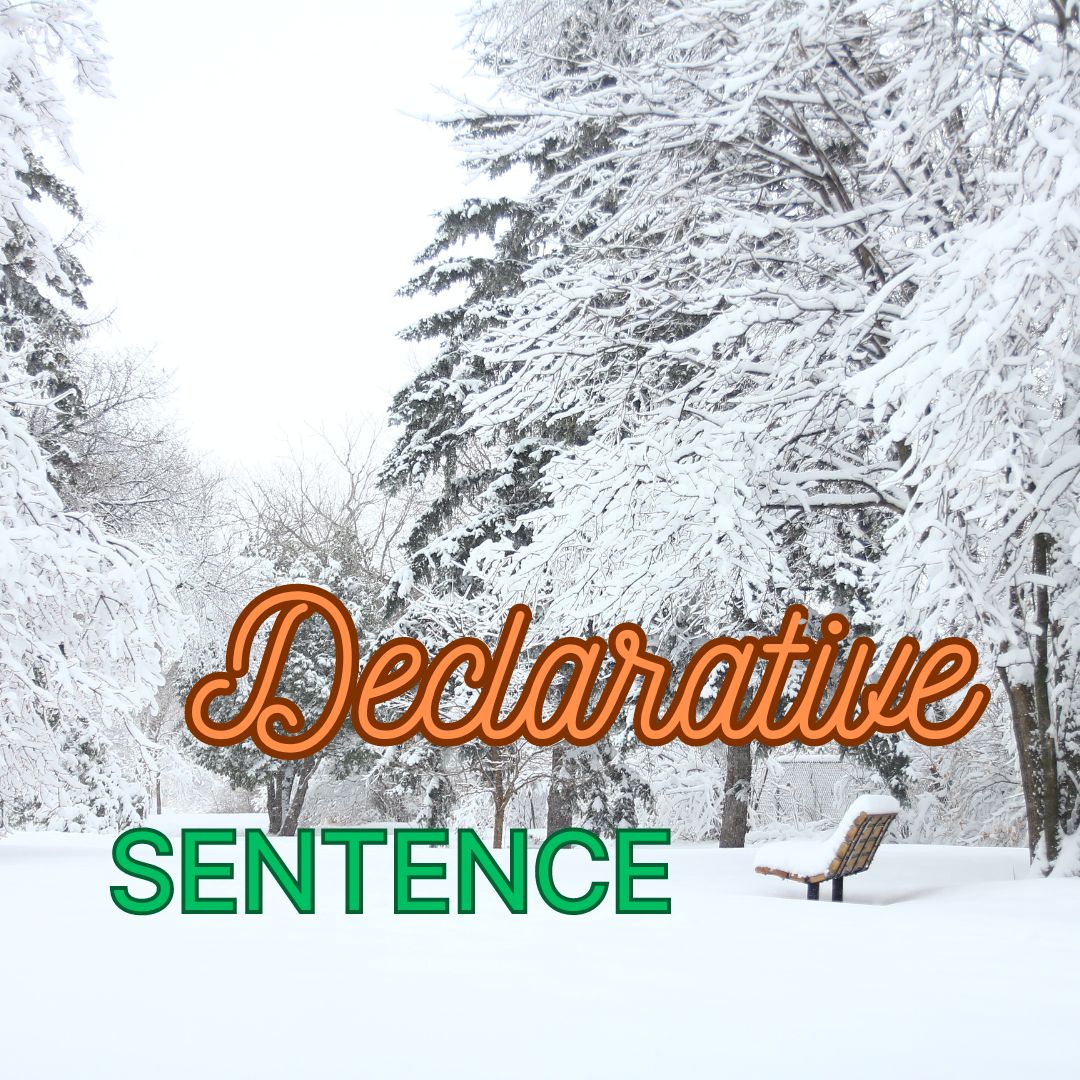Declarative Sentence in English Grammar

Declarative Sentence
A declarative sentence is a type of sentence that makes a statement or expresses an opinion. Its primary function is to convey information or provide some kind of explanation. Declarative sentences typically end with a period (.), and they are the most common type of sentence in the English language.
Grammar Features:
Subject-Verb-Object Structure:
Declarative sentences typically follow a subject-verb-object (SVO) structure. The subject is the doer of the action, the verb is the action itself, and the object is the recipient of the action.
Example: The cat (subject) sat (verb) on the mat (object).
Use of Period (.): Declarative sentences end with a period to signify a complete thought.
Example: I enjoy reading books.
Positive or negative statements:
Declarative sentences can be positive or negative, depending on whether they assert the presence or absence of something.
Positive Example: The sun shines brightly.
Negative Example: I do not like spinach.
A positive declarative sentence is a statement that affirms or asserts a fact, providing straightforward information without expressing doubt, negation, or interrogation.
These sentences make a clear and positive assertion about the subject, conveying information in a direct and factual manner.
The Earth revolves around the sun.
This declarative sentence states a scientific fact.
Sheila is an excellent pianist.
In this sentence, a positive statement is made about Sheila’s piano skills.
The meeting will take place at 3:00 p.m.
Here, the sentence provides information about the time of the meeting.
Negative declarative sentences are used to state facts, express negation, or convey the absence of a particular action or condition. The negative element is typically introduced by words such as not, never, no, or their contractions.
She did not want to attend the meeting.
This sentence is a negative declarative statement because it conveys a negative action—she does not want to attend the meeting. The negative aspect is expressed through the use of the word not, indicating a lack of desire or willingness.
The experiment did not yield the expected results.
In this negative declarative sentence, the word not indicates that the experiment did not produce the anticipated outcomes. The negative form adds a contrast to the positive expectation, providing information about the experiment’s outcome.
They have never encountered such a challenging problem before.
This sentence is negative in nature because of the inclusion of never, indicating a lack of previous experience with a challenging problem of this nature.
The negative form emphasises the uniqueness or difficulty of the situation.
Declarative sentences play a crucial role in expressing facts, opinions, and ideas in a variety of contexts.
Declarative Sentence in English Grammar
Parallelism in English Grammar
What is Adverbial Modifier of a Sentence
What is The Object of a Sentence?